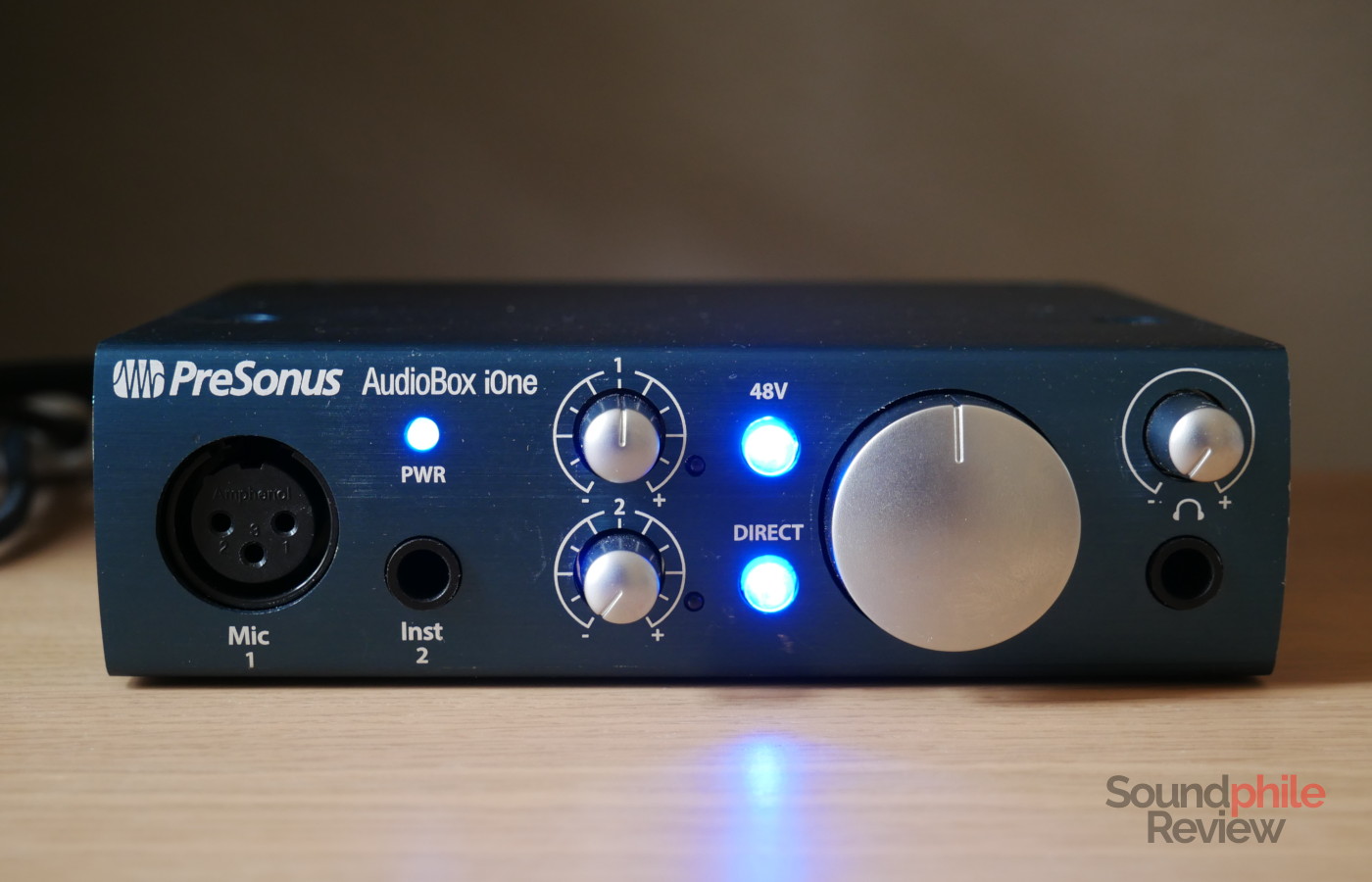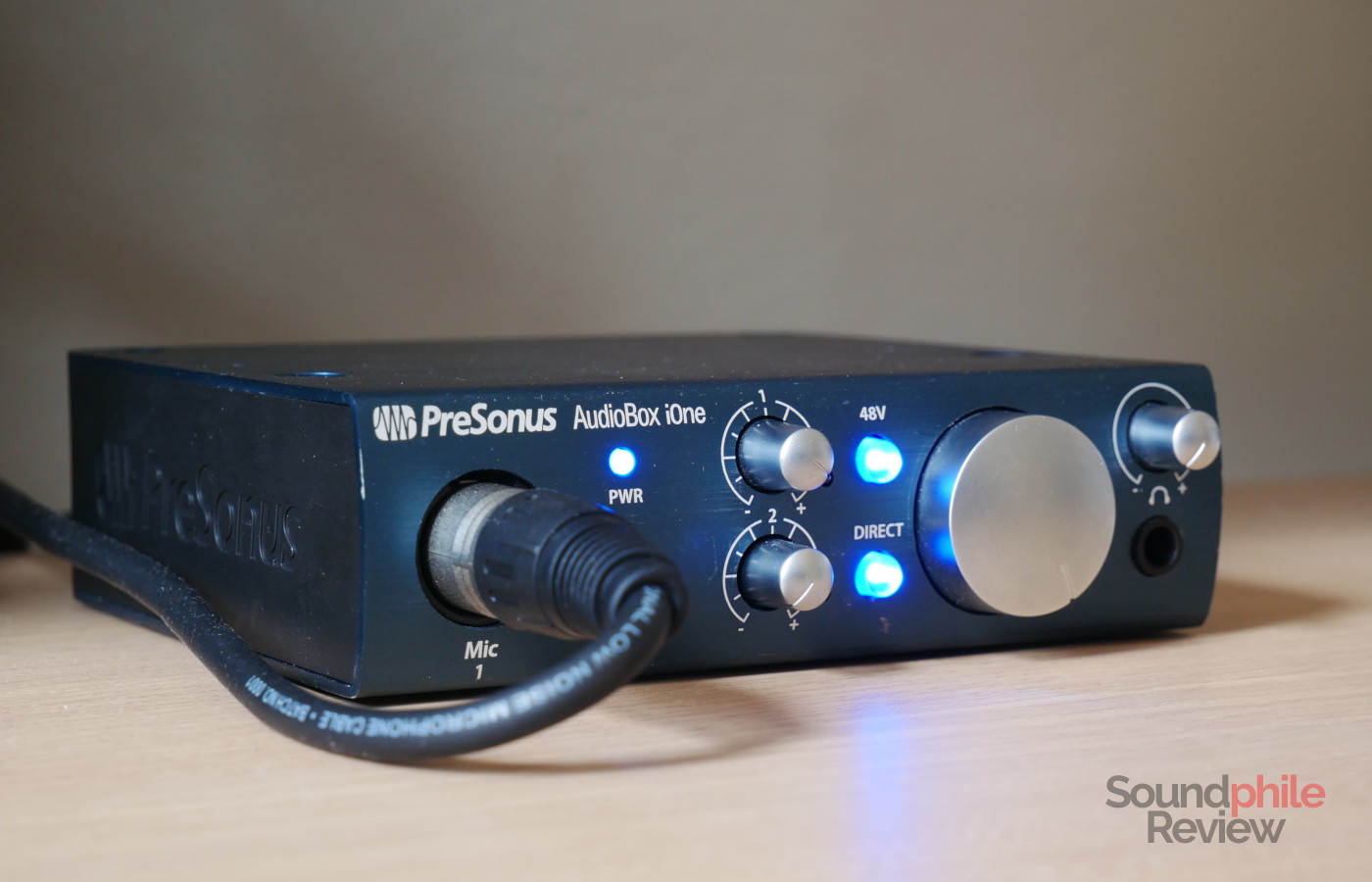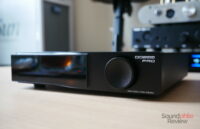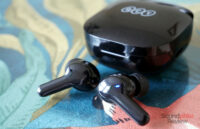For a long time the PreSonus AudioBox iOne has been the entry-level audio interface of the company, meant for the budget-conscious musician or streamer who wanted to get good value from their setup without spending an arm and a leg. The AudioBox iOne is still a very good device, years after its introduction, and can be found at very affordable prices.
Disclaimer: I bought a unit second-hand. PreSonus is not involved in this review. Additional information is available on their website.
Packaging & Accessories
The packaging doesn’t include much: you can only find the manuals and a USB to USB-B cable. There is also a code to download PreSonus’ own DAW, Studio One; the unit I bought didn’t have this, though, as the previous owner had used the code for himself.
Design & Build

The PreSonus AudioBox iOne is built from a single piece of aluminium bent to form a C shape: it covers the top, front and bottom of the device. The rest is closed by a single plastic piece (again in a C shape). Both the top and the bottom feature large black screws that keep the device together. The aluminium has a brushed texture and is coloured blue, in keeping with the company’s brand identity. At 150 x 135 x 43.5 mm, the AudioBox iOne is small – and at just 620 g, it is very lightweight too. In fact, it almost feels too light!
The front hosts an XLR connector as well as a 6.3 mm jack input, together with a knob for each to adjust the gain, a button to enable 48 V phantom power, a button to enable direct monitoring, a volume knob for the inputs, a 6.3 mm headphone jack and a volume knob for the headphone output. The back has a USB-B input, a USB-A input (to use the AudioBox iOne with mobile devices, as an example), a Kensington lock and a pair of RCA outputs.
Overall, build quality appears decent and the AudioBox iOne looks sturdy enough and able to take a bit of a beating – which, considering it is designed to also be used on the go, it probably will. It has to be said, however, that the edges of the aluminium piece are a bit sharp, and the buttons feel a bit wobbly. This is a budget interface and it shows in these small details. The knobs are quite good, on the other hand.
Features & Specs

The AudioBox iOne offers 24 bit, 96 kHz recording, which is very respectable. PreSonus touts a frequency response from 10 Hz to 40 kHz (though with a ±3 dB attached to it), as well as a THD+N value of < 0.008% and an SNR of > 95 dB. The company uses undisclosed amplifiers.
The headphone output is capable of 60 mW of output at 60 Ω, which is enough to drive most low-impedance headphones to a reasonably high volume.
One thing that is missing here, in case you want to use the AudioBox iOne at your desk, is an on/off switch. The interface will stay powered on in many cases even if the computer is actually turned off (it does so on all of my computers!), so the only way to switch the interface off is to unplug the USB cable, which however is far from ideal as it will wear out the USB port over time. Many interfaces indeed do not feature an on/off button, though I struggle to understand why given how you might want to keep them plugged in at all times without actually having them powered on. Go figure!
Sound

I have tested the PreSonus AudioBox iOne with a variety of microphones and headphones, including the RØDE PodMic, the Drop AKG K7XX and the Sennheiser HD 6XX.
The recording capabilities of the AudioBox iOne are very good as it offers a fairly linear response throughout the spectrum, with possibly the exception of the lowest notes. Voices, guitars and other instruments are recorded with no discernible difference from other interfaces I own like the RØDE RØDECaster Pro II. That means the AudioBox iOne will pair well with the vast majority of microphones out there.
One element to take note of is the fact that the pre-amplification isn’t super powerful, so your volume will sound low if your microphone isn’t too sensitive – as in the test recording you can find below. The recording was made using a Maono PM500 microphone on Audacity, with the volume set as you see in the picture above, with no modifications.
On the front of reproduction, the AudioBox iOne fares decently well, though you must pay attention to your headphones’ impedance: while they sound okay with the K7XX, the HD 6XX sound muddy and lacking detail. In other words, the interface only takes low-impedance headphones and won’t play nice with high-impedance ones. With the K7XX the sound you get is almost indistinguishable to that you get with, say, the SMSL C200, which means it’s neutral and flat (in a good way!).
Final Thoughts
It looks like PreSonus had sent the AudioBox iOne to its well-earned retirement just before I wrote this review. The device can still be found on sale for very affordable prices, as well as obviously on the used market. It will not be able to compete with more expensive alternatives, and it is not the best choice if you have high-impedance headphones, but considering it comes with the Studio One software and that it offers all you need to get started in your recording journey, it is a decent option to consider as a starting point if you want a plug-and-play audio interface for either recording instruments or voice. There are better options out there, with more features and better specs, but they all invariably cost more – so if saving money is your priority, this might just be the option for you.








